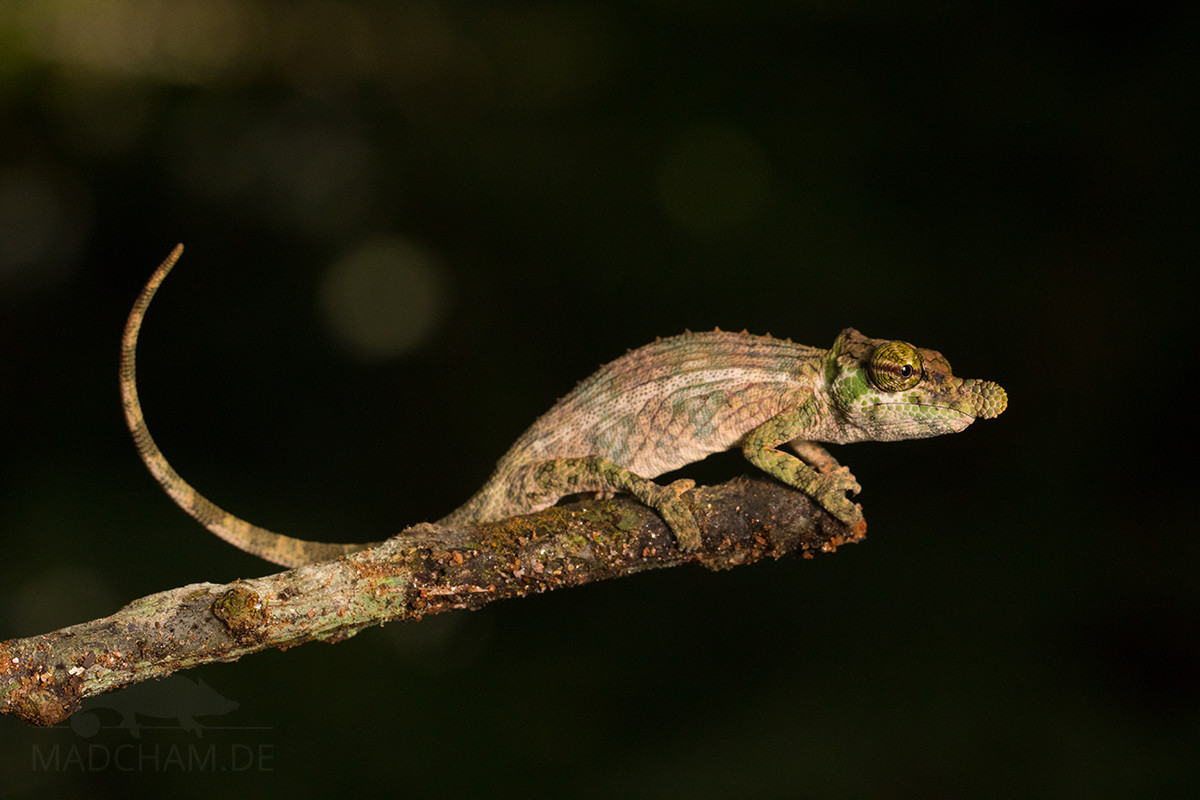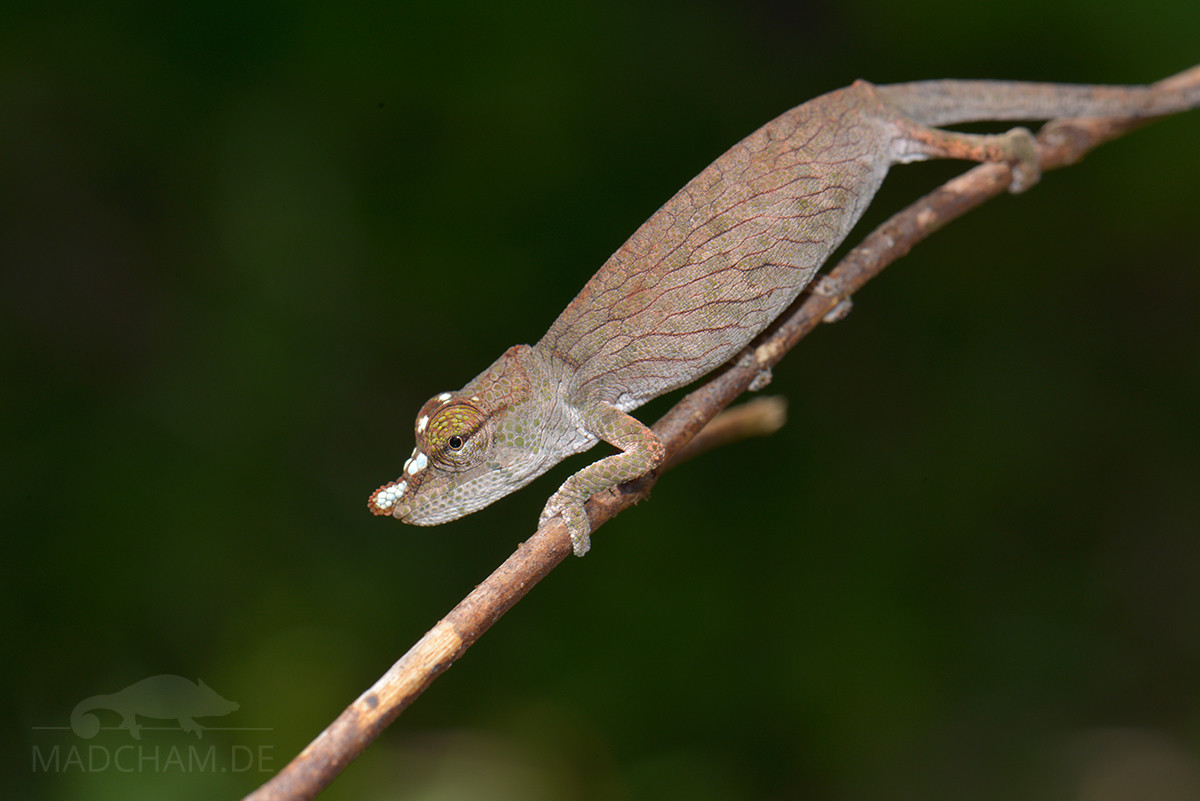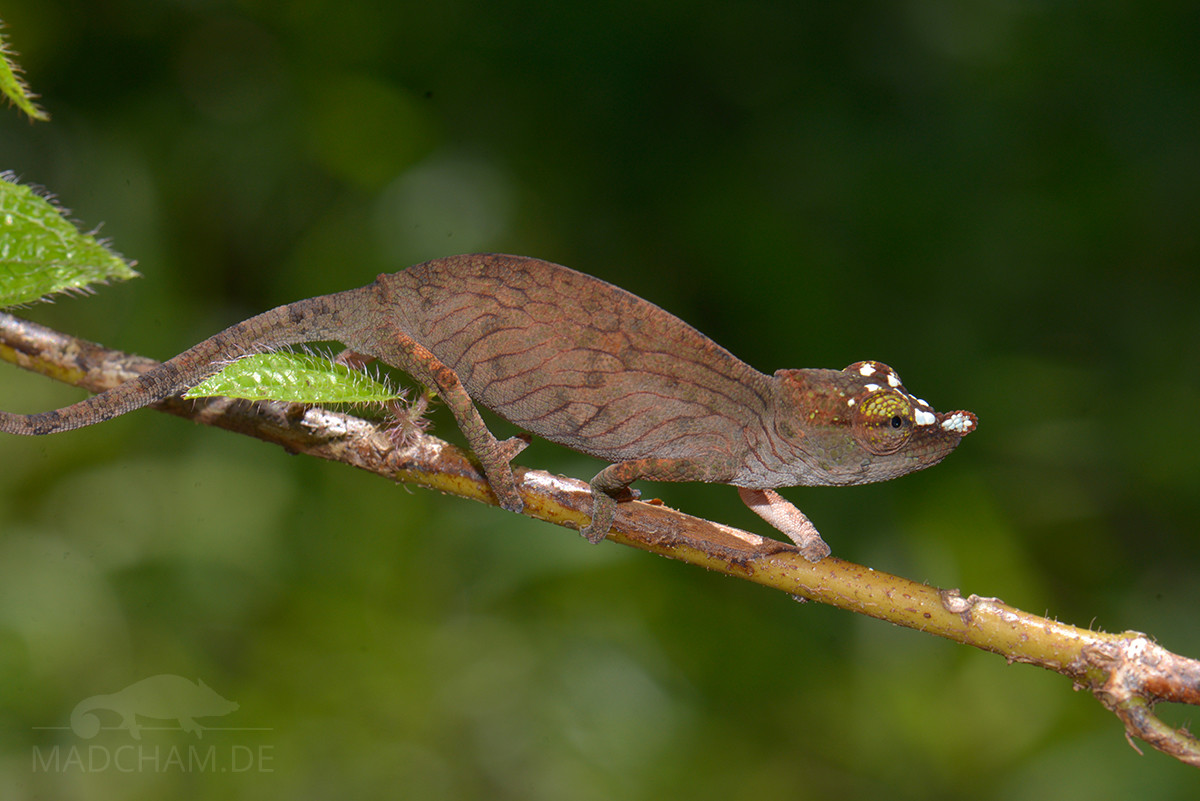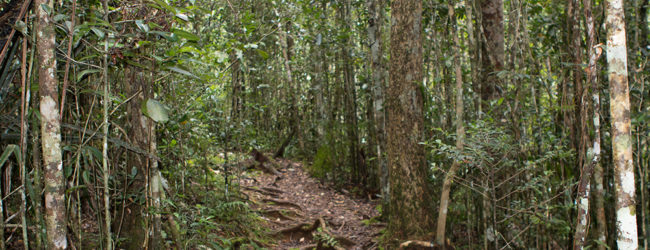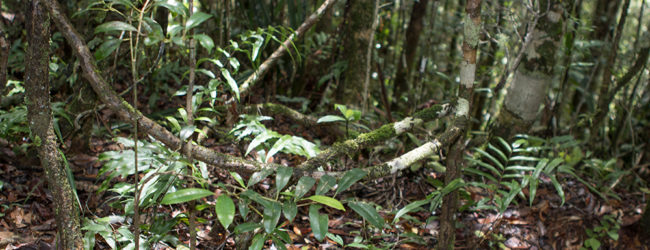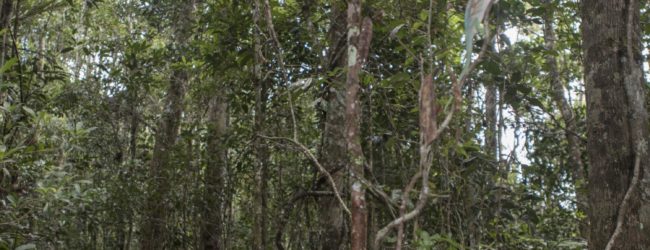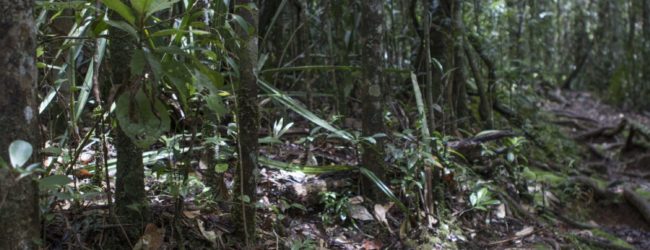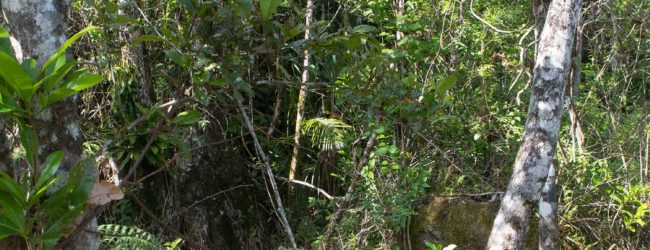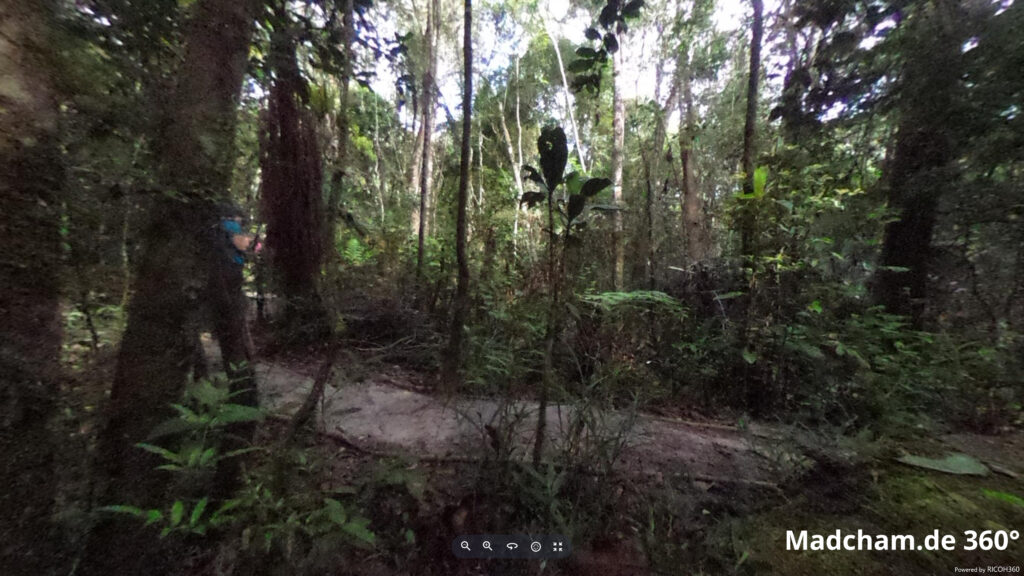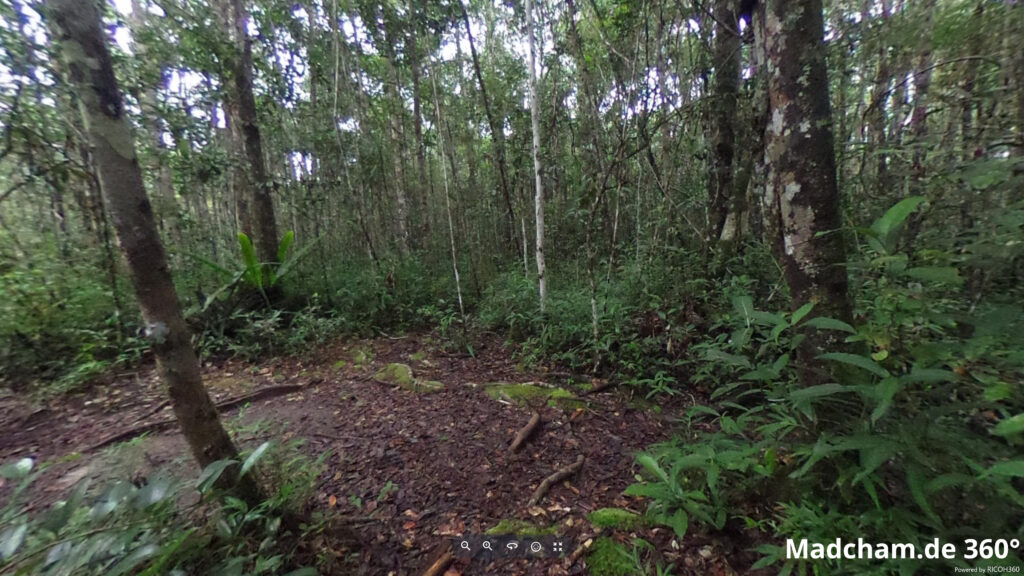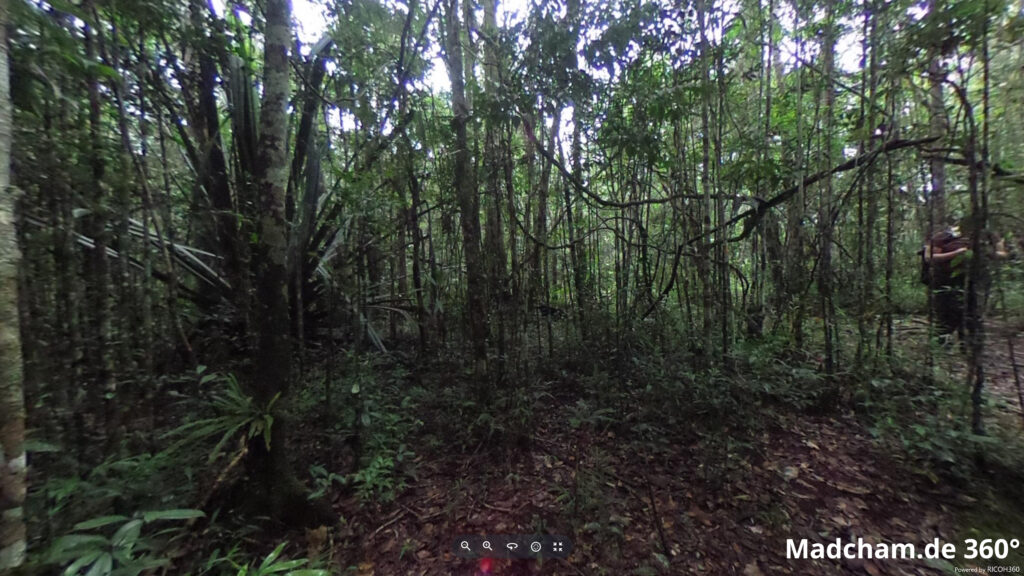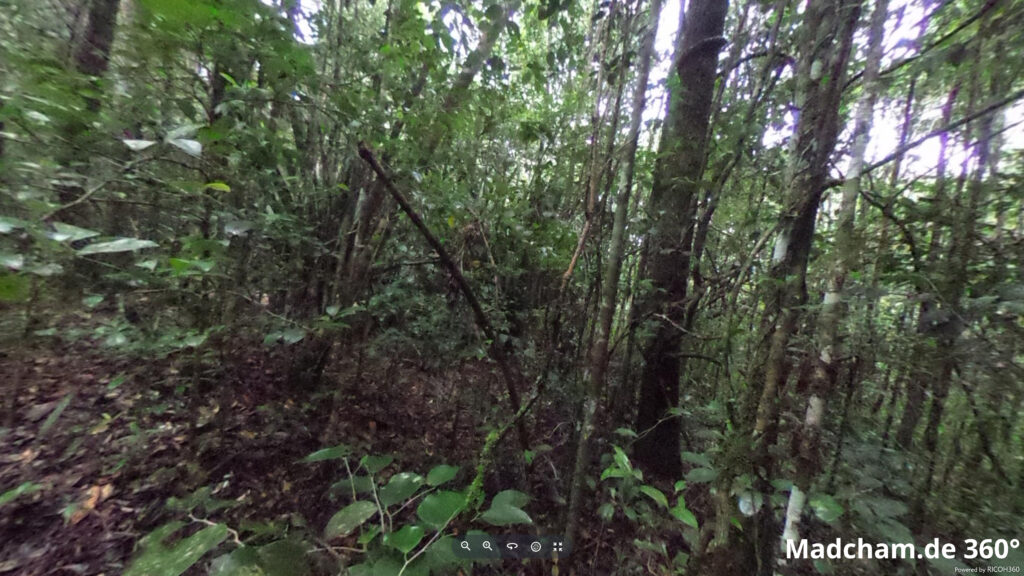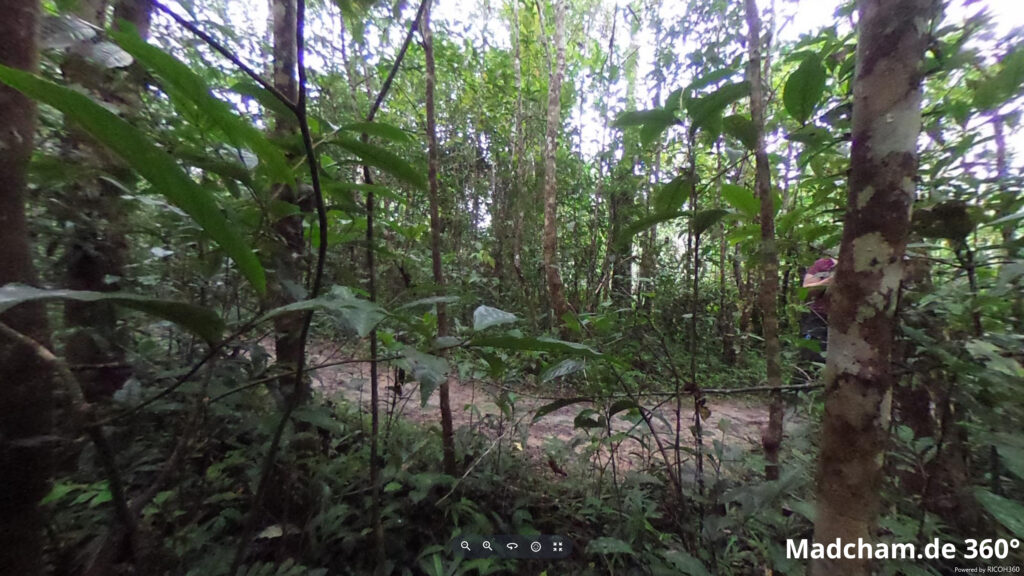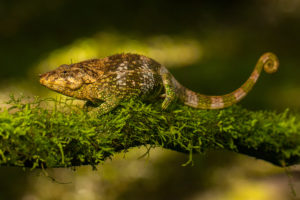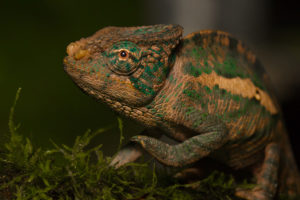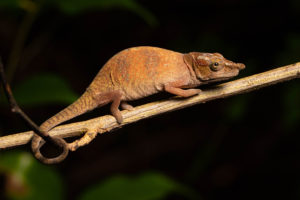2011-13 no specimens, 2014-16 each 1000 specimens, 2017 for the first time 2000, 2018-2024 each 1000 specimens for legal export
First description:
(Duméril & Bibron, 1836)
Origin of the species name:
The zoologist André Marie Constant Duméril, then head of herpetology at the Natural History Museum of Paris (France), together with his assistant Gabriel Bibron, named this chameleon species after its conspicuous nose.
Distribution:
The distribution range of Calumma nasutum is mainly restricted to the region around the Andasibe-Mantadia National Park in the eastern highlands of Madagascar. Since the 2020 revision (see “Good to know”), it is clear that the species is significantly rarer than Calumma emelinae, which also occurs in this area. Especially the females of Calumma nasutum are often confused with Calumma emelinae. A second population of Calumma nasutum occurs in northern Madagascar in the Sorata Massif. This area is largely inaccessible for travelers, so that there are hardly any finding reports from there.
Look and size:
Calumma nasutum is one of the small chameleons and with a total body length of eight to ten centimeters, it is a real midget. The animals have a round, elastic rostral appendage, which is more pronounced in the males. The rostral scale directly below the nose is not integrated into the rostral appendage itself. The temporal crest consists of only one tubercle. Whether males show a dorsal crest or not varies within the species. A striking feature of males of Calumma nasutum is the high casque (1.5-2 mm), which is very similar to that of Calumma fallax. The scales on arms and legs are slightly larger than those on the body, and the coloration of the males is mainly limited to beige on the body and light green on the head, arms, and legs. The females are a little more inexpressibly light beige. When excited, Calumma nasutum can show slightly visible turquoise-blue bands on the body.
Good to know:
Calumma nasutum is the name-giving chameleon species of the so-called nasutum group. This group includes a large number of small chameleons from Madagascar with a soft rostral appendage. It was not until 2020 that Prötzel, Scherz et al. defined Calumma nasutum in more detail so that its distribution and appearance are determined as described here. Most of the animals described as Calumma nasutum all over Madagascar until 2020 now belong to Calumma radamanus and the radamanus group of the same name. The latter still contains many undescribed species. Due to years of lack of genetic differentiation of different species, countless chameleons have been exported under the name Calumma nasutum since 2014. Most are not Calumma nasutum at all, but other chameleon species.
| Jan | Feb | Mar | Apr | May | Jun | Jul | Aug | Sep | Oct | Nov | Dec | |
| Average temperature | 23 | 24 | 23 | 23 | 22 | 19 | 19 | 19 | 20 | 21 | 22 | 23 |
| Minimum temperature | 20 | 20 | 20 | 19 | 18 | 15 | 15 | 15 | 15 | 16 | 18 | 19 |
| Maximum temperature | 27 | 27 | 27 | 27 | 25 | 23 | 23 | 23 | 24 | 25 | 26 | 27 |
| Rain days | 27 | 24 | 26 | 19 | 17 | 18 | 21 | 20 | 15 | 16 | 20 | 25 |
We have collected the data given above over several years with thermometers and hygrometers at the finding places of the chameleons. "Average temperature" means that values of a whole month have been calculated to one average value per month. For example all measured minimum temperature values of February have been calculated to one average minimum temperature for February. In plain language, this means single peak values of a day may be a little higher or lower than the average minimum and maximum temperatures. It is possible that a location has an average maximum temperature of 29°C, but one day during that month it had 33°C or even 35°C there.
Three examples of a daily course of temperatures in Andasibe in the rainy season can be found below. Both were recorded with data loggers in 2023.
The region around Andasibe with the associated forests of Mantadia, Mitsinjo and Analamazaotra lie in the eastern highlands of Madagascar at altitudes between 900 and 1250 m above sea level. During the day, the temperature may sometimes exceed 25°C, but the thermometer rarely climbs above 30°C, or only in sunspots. At night, temperatures plummet, especially during the dry season. 10° to 15° degrees are the rule.
Humidity in the rainforests around Andasibe is high all year round. During the rainy season it rains extensively every day, sometimes the rain lasts for days. But the dry season is not massively different either, except that it has slightly cooler temperatures overall and reaches lower temperatures at night. It still rains at least every other day. Rain, high humidity and a drop in temperature at night are therefore the central points of Andasibe's climate. In 2023, we measured relative humidity with data loggers on different days in Andasibe in the rainy season, the data can be found below.
 Tageszeit = day time, Sonne = sun, Halbschatten = half shade, Schatten = shade
Tageszeit = day time, Sonne = sun, Halbschatten = half shade, Schatten = shade
We have measured UVB data with a Solarmeter 6.5 in spring (March, April) at the peak of activity of chameleons in Madagascar. We always measured the values that a chameleon could maximally reach in its habitat.
| Jan | Feb | Mar | Apr | May | Jun | Jul | Aug | Sep | Oct | Nov | Dec | |
| Morning | 23,2 | 23,4 | 22,0 | 22,1 | 20,5 | 16,0 | 16,3 | 16,5 | 17,4 | 16,7 | 21,2 | - |
| Midday | 25,4 | 25,3 | 24,5 | 22,5 | 20,2 | 16,5 | 16,3 | 17,7 | 18,3 | 18,0 | 21,4 | - |
| Evening | 25,5 | 25,1 | 25,0 | 25,3 | 20,8 | 17,2 | 16,1 | 17,0 | 19,6 | 23,0 | 22,0 | - |
Between 21 March 2018 and 05 February 2019, we measured ground temperatures in the rainforest of Andasibe and surrounding areas (Analamazaotra, Andasibe, V.O.I.M.M.A. and Mitsinjo) about every other day - the table is the result of these measurements. Only in December no measurements were taken. detailed review can be found here. In total, we took 418 soil temperature measurements and measured an estimated 70 different locations in Andasibe and the surrounding area at a depth of 20 cm.
In 2023, in addition to other climate data, we also measured the air pressure at the locations we visited in Madagascar. The following data is from different days during the rainy season in Andasibe. On the X-axis is the time of day or night. In Madagascar, the day begins around 6 am, and night falls at 6 pm. The Y-axis shows the atmospheric pressure in hPa.
Habitat:
The following photos show parts of the habitat of Calumma nasutum in Andasibe, Analamazaotra and Maromizaha. They inhabit thin trees, shrubs and bushes, but also thick lianas in the dense rainforest. Only very rarely they are found in open terrain, they prefer dense foliage and deep rainforest.
Below you will find some 360° images of rainforests in the Andasibe region that we took during the rainy season. If you click on the respective image, the pictures will open in an enlarged view in a separate window. You can use the mouse to rotate in all directions. You also have the option of running the images in full-screen mode. Have fun looking at them!

